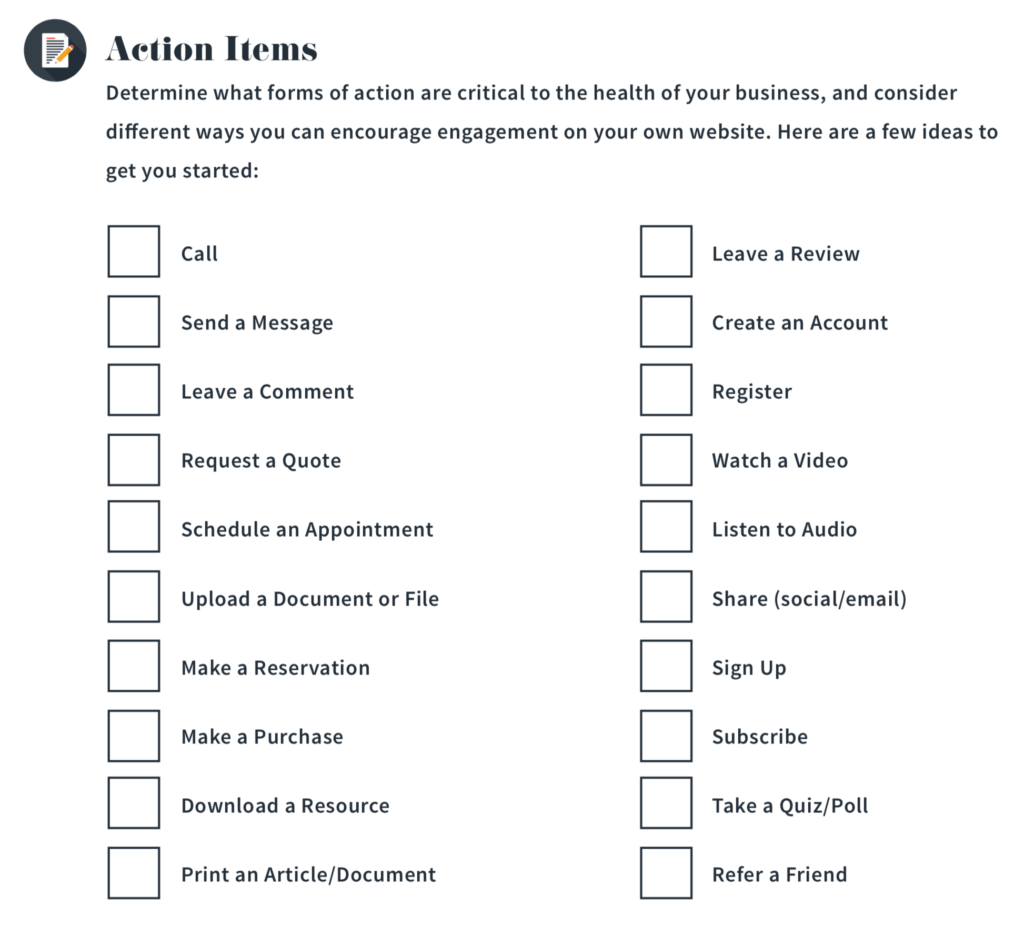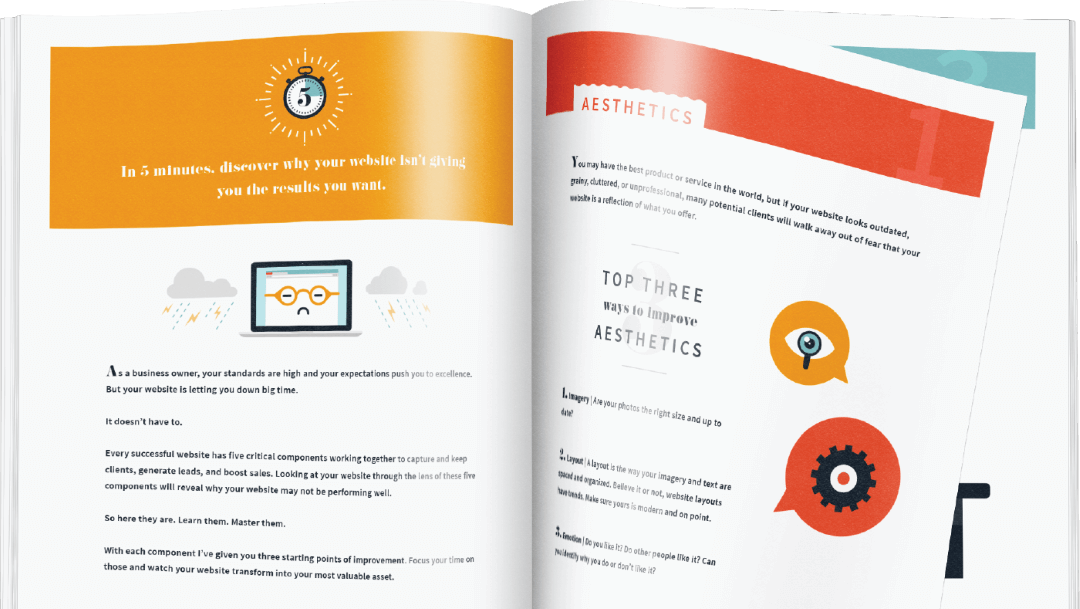What you expected your website to do for you:
What it’s ACTUALLY doing for you:
If this is you, then let’s sit down and have a talk.
While there are a lot of factors that go into a successful website (see our Website Assessment Guide for what we like to call our website “cheat codes”), a common problem is that most websites INFORM, not SELL.
It’s an easy mistake – snap a couple of photos, write up what you sell or do, put up a phone number and some office hours, and you’ve got a website, right?
Sure. But you’ve simply created a place for your visitors to be passive bystanders, take what they need, and walk away without giving you anything in return. ?
Your website can, and should, be more dynamic than that. With your online presence, you have a unique, one-time opportunity to make your potential customers stand up and take action.
With a little bit of thought (and maybe more work than you were intending), you can your online visitors excited enough to interact with you and even buy right then and there.
1. Copy That Sells
Website copy is one of those things that is usually put off to the last minute, with most people assuming they can do it themselves in a couple of hours.
DON’T DO THAT.
If you can write well, you are more than welcome to write your own copy. However, you need to START with your copy. By starting with your copy, you’re getting all of your information out and able to understand what you’re working with.
So get all of your business stuff on paper – your mission statement, why you’re in business, what you’re hoping to accomplish – all that good stuff you might not have thought about in awhile.
Then, you need to put yourself in your customer’s shoes. Why should they buy from you? What do you offer that your competitors don’t? What sort of words do your customers use? Are they educated? Are they male or female? Are they local or national? What struggles do they have that you can help with? What can you help them achieve? Etc.
Once you know who your customer is, talk directly to them – use “you” and “me” and “us” and “we”. Use the language they would use. Tell them why you’ll make their life easier, better, brighter, etc. But don’t do this in a cheesy sort of way. Be honest. Be smart. Be an authority on the matter, and they’ll trust you. Testimonials and success stories go a long way too.
It’s incredibly easy to fall into talking about yourself in your copy and forget about the person you’re talking to, but don’t. Let me give you an example from my own work just last week:
For the membership page in the upcoming Control Yours website redesign, I was going to give it the header “We do websites differently.” Decent header, nothing wrong with it. Except, it talks about us. ? Instead, I’ve changed it to highlight the benefit to the clients, “Never become irrelevant.” It’s far more powerful and immediately calls out what the Control Yours membership does without having to do much more reading. ?
Your website copy needs to connect with your visitors at an emotional level. They need to desire what you have and then they’ll rationalize their way into spending the money. Your copy has the ability to do that ONLY if you start where your potential customer is at.
While you may be an excellent writer and communicator, writing your own website can be a special kind of torture. Fortunately, there is a unique breed out there who loves to do this stuff: copywriters. They are fine-tuned to write copy that sells. Control Yours has a few freelance copywriters at their fingertips and they’d be happy to help.
2. Imagery That Inspires
The problem with people is that they tend to be smart and adaptable ?. While stock imagery and grainy photos were fine a few years ago, Pinterest and Instagram has conditioned us to expect beautiful, thoughtful, crisp imagery that makes us dream of a bigger and better life than the one we’re living.
You need that for your website. You need that for your product or service.
If you don’t have the equipment or know-how to accomplish this, a professional photographer is an asset here.
Once you have outstanding imagery and killer sales copy, all you need to do is provide your customer with the next step. Which is….
3. Opportunity to Take Action
This one seems obvious. But it’s frequently overlooked or made too complicated.
Make it EASY for your potential client to take the next step. Even if you aren’t selling a product that requires a shopping cart, we’re all selling something.
If it’s a service, they should be able to connect with you with one click. There are really cool apps that you can integrate into your website to enhance the connecting experiencing. Here at Control Yours, we’ve found Calendly to be invaluable.
In copywriting, we call this the call to action (CTA). Each page should have some sort of CTA. Whether it’s a contact form and a link to Calendly at the bottom of an About page, or a Newsletter sign-up on your home page, you need to provide every opportunity you can to allow your potential customer to become a REAL customer.
In our Website Assessment Guide, we’ve come up with a list of ways for customers to take action. Here’s a sneak peek:

So, what do you think? Does your website simply inform? Or do you have all of the right things in place for it to be a selling machine?
If you’re not sure, you can start by downloading our Website Assessment Guide that walks you through all of the details of successful websites. But, if you would like to get more personal, we’d be happy to meet with you and go through your website in person or over the phone.

